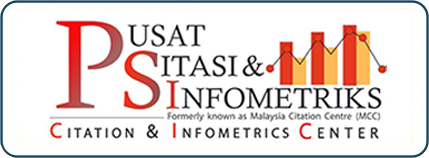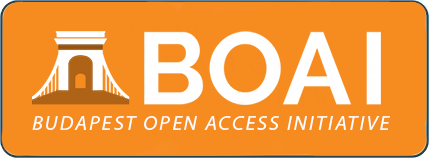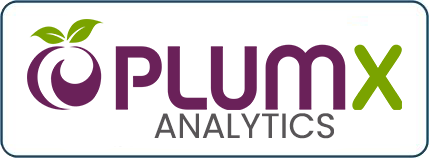The Scale Validation of Amanah Ikhtiar Malaysia’s Microfinance Services and Household Socioeconomic Instrument
An Exploratory Factor Analysis
DOI:
https://doi.org/10.33102/jmifr.593Keywords:
Microfinance, Management Practices, Entrepreneurial Competencies, Institutions Efficiency, Socioeconomic PerformanceAbstract
Households' socioeconomic outcomes play a crucial role in sustainable development. Both public and private organisations have introduced various microfinance schemes to address economic deprivation. Nevertheless, there is ongoing debate in the literature about the effectiveness of these strategies in improving household socioeconomic performance. Researchers continue to face challenges in identifying key factors that enhance the performance of low-income households, largely due to the absence of reliable measurement tools. This study develops and validates a scale specifically designed to capture the multifaceted effect of microfinance on household socioeconomic well-being. The research introduces measuring constructs for first-order constructs relating to variables such as microfinance services, household Entrepreneurial Competencies (EC), Financial Management Practices (FMP), and socioeconomic performance. Using Exploratory Factor Analysis (EFA) on data collected from low-income households engaged in microfinance programs in Malaysia, the study assesses the instrument’s reliability and validity. Findings ensure the potential of the validated measurement tool to evaluate the effectiveness of microfinance interventions. The results confirm that the developed instrument is valid and reliable for future studies on microfinance and household economic models.
Downloads
References
Abdullah, M. A., & Loke, Y. J. (2022). Financial resilience and the need for crisis preparedness in microfinance: Lessons from the COVID-19 pandemic. International Journal of Economic Perspectives, 16(4), 321–338.
Abdullah, W. M. Z. B. W., Zainudin, W. N. R. A. B., & Zia-ul-haq, H. M. (2024). The impact of microfinance services on household economic well-being with the moderating role of microfinance institutions' credibility. Asian Development Policy Review, 12(3), 264–280. https://doi.org/10.55493/5008.v12i3.5169
Abdullah, W. M. Z. B. W., Zainudin, W. N. R. A. B., Ismail, S. B., & Zia-Ul-Haq, H. M. (2022). The Impact of Microfinance Services on Malaysian B40 Households’ Socioeconomic Performance: A Moderated Mediation Analysis. International Journal of Sustainable Development and Planning, 17(6), 1983–1996. https://doi.org/10.18280/ijsdp.170634
Abdullah, W. M. Z., Zainudin W. N. R., Ishak, W. W. M., Sulong, F., Zia-Ul-Haq, H. M. (2021a). Public participation of renewable energy (PPRED) model in Malaysia: An instrument development. International Journal of Renewable Energy Development, 10(1), 119–137. https://doi.org/10.14710/ijred.2021.32311
Abdullah, W. M. Z., Zainudin, W. N. R., & Ishak, W. W. (2018a). The Scale for Assessment of Public Participation Towards Renewable Energy (RE) Development in Malaysia: An Exploratory Factor Analysis (EFA). Advanced Science Letters, 24(12), 9384–9388. https://doi.org/10.1166/asl.2018.12280
Abdullah, W. M. Z., Zainudin, W. N. R., & Ramli, N. A. (2018b). An Exploratory Factor Analysis (EFA) for Developing and Validating a Scale of Public Acceptance on Willingness to Pay (PAWP) Maximum Demand (MD) Charge in Malaysia. Advanced Science Letters, 24(12), 9379–9383. https://doi.org/10.1166/asl.2018.12279
Abdullah, W., Zainudin, W. N. R. A. B., Ismail, S. B., Haat, M. H. C., & Zia-Ul-Haq, H. M. (2021b). The Impact of Microfinance on Households' Socio-economic Performance: A Proposed Mediation Model. The Journal of Asian Finance, Economics and Business, 8(3), 821–832. https://koreascience.kr/article/JAKO202106438543566.pdf
Ahmad, S., Noor, H., & Hamid, A. (2019). Consumption vs. investment: Assessing the usage of microfinance loans among AIM clients. Malaysian Journal of Economic Studies, 56(3), 299–314.
Al-Mamun, A., Ibrahim, M. A. H. B., Muniady, R., Ismail, M. B., Nawi, N. B. C., & Nasir, N. A. B. M. (2018). Development programs, household income, and economic vulnerability: A study among low-income households in Peninsular Malaysia. World Journal of Entrepreneurship, Management, and Sustainable Development, 14(4), 353–366. https://doi.org/10.1108/WJEMSD-01-2018-0008
Al-Mamun, A., Muniady, R., Fazal, S. A., & Malarvizhi, C. A. (2019). Micro-enterprise development training and entrepreneurial competencies among low-income households in Malaysia. Asia Pacific Journal of Innovation and Entrepreneurship, 13(3), 354–366. https://doi.org/10.1108/APJIE-06-2019-0042
Al-Mamun, A., Muniady, R., Yukthamarani, P. P., Zainol, N. R., & Mohamad, M. R. (2016). Micro-enterprise development initiatives and entrepreneurial competencies, innovativeness, and social capital in Malaysia. Development in Practice, 26(8), 1094–1110. https://doi.org/10.1080/09614524.2016.1228830
Al-Shami, S. S. A., Majid, I. B. A., Rashid, N. A., & Hamid, M. S. R. B. A. (2014). Conceptual framework: The role of microfinance on the well-being of poor people cases studies from Malaysia and Yemen. Asian Social Science, 10(1), 230–242. http://dx.doi.org/10.5539/ass.v10n1p230
Al-Shami, S. S. A., Majid, I., Mohamad, M. R., & Rashid, N. (2017). Household welfare and women empowerment through microcredit financing: Evidence from Malaysia microcredit. Journal of Human Behavior in the Social Environment, 27(8), 894–910. https://doi.org/10.1080/10911359.2017.1345341
Anthony, R., & Sabri, M. F. (2015). Financial management practices of medical practitioners in the private and public medical service in Malaysia. International Review of Management and Business Research, 4(4), 1105–1117. https://www.irmbrjournal.com/papers/1449653632.pdf
Bartlett, M. S. (1950). Tests of significance in factor analysis. British Journal of statistical psychology, 3(2), 77–85. https://doi.org/10.1111/j.2044-8317.1950.tb00285.x
Bernard, D. K., Kevin, L. L. T., & Khin, A. A. (2016). Entrepreneurial success through microfinance services among women entrepreneurs in Sri Lanka: A pilot study and overview of the findings. International Journal of Economics and Financial Issues, 6(3), 1144–1150. https://www.econjournals.com/index.php/ijefi/article/view/2454
Cabraal, A. (2011). The impact of microfinance on the capabilities of participants [Doctoral thesis, RMIT University). RMIT University. https://doi.org/10.25439/rmt.27576558
Cattell, R. B. (1966). The scree test for the number of factors. Multivariate behavioral research, 1(2), 245–276. https://doi.org/10.1207/s15327906mbr0102_10
Chen, M. A. & Dunn., E. (1996). Household Economic Portfolios. Assessing the Impact of Microenterprise Services. https://pdf.usaid.gov/pdf_docs/PNABZ077.PDF
Chowdhury, T. A., & Mukhopadhaya, P. (2011). Poverty alleviation and service delivery: Government and non-government organizations in rural Bangladesh. Oxford Development Studies, 39(4), 427–452. https://doi.org/10.1080/13600818.2011.620087
Coakes, S. J, & Ong., C. (2011). SPSS Version 18.0 for windows: Analysis without Anguish. Wiley.
Department of Statistics Malaysia (2022). Poverty rates in Malaysia from 1970 to 2022. Malaysia's National Statistics Organisation. https://open.dosm.gov.my/data-catalogue/hh_poverty
Department of Statistics Malaysia. (2019). Household Income and Basic Amenities Survey Report. Ministry of Economy Department of Statistics Malaysia. https://www.dosm.gov.my/v1/index.php?r=column/cthemeByCat&cat=120&bul_id=TU00TmRhQ1N5TUxHVWN0T2VjbXJYZz09&menu_id=amVoWU54UTl0a21NWmdhMjFMMWcyZz09
Department of Statistics Malaysia. (2020). Household Income Estimates and Incidence of Poverty Report. Ministry of Economy Department of Statistics Malaysia. https://www.dosm.gov.my/v1/index.php?r=column/cthemeByCat&cat=493&bul_id=VTNHRkdiZkFzenBNd1Y1dmg2UUlrZz09&menu_id=amVoWU54UTl0a21NWmdhMjFMMWcyZz09
Dobrea, M., & Maiorescu, I. (2015). Entrepreneurial outcomes and organizational performance through business coaching. Amfiteatru Economic Journal, 17(38), 247–260. http://hdl.handle.net/10419/168914
Edris, M., Bashir, M., Bakar, Y. A., & Baharuddin, A. (2021). The role of microfinance in helping the poor: Amanah Ikhtiar Malaysia as a model. Dirasat: Human and Social Sciences, 48(2), 673–683. https://archives.ju.edu.jo/index.php/hum/article/view/109324
Field, A. (2013). Discovering statistics using IBM SPSS statistics. Sage.
Fiorillo, A., Potok, L., Wright, J., Peachey, J., & Davies, K. (2014). Applying behavioral economics to improve microsavings outcomes. In Ideas, 42, 1–29. https://www.ideas42.org/wp-content/uploads/2015/05/Applying-BE-to-Improve-Microsavings-Outcomes-1.pdf
Gorsuch, R. L. (1990). Common factor analysis versus component analysis: Some well and little known facts. Multivariate Behavioral Research, 25(1), 33–39. https://doi.org/10.1207/s15327906mbr2501_3
Hair, J. F., Anderson, R. E., Tatham, R. L., & Black, W. C. (1995). Multivariate data analysis New York. Macmillan.
Hameed, W., Nawaz, M., Basheer, M. F., & Waseem, M. (2019). The Effect of Amanah Ikhtiar Malaysia (AIM) on Microenterprise Success in Sabah State Malaysia. The Dialogue, 14(2), 223–238. https://www.researchgate.net/publication/334548612_The_Effect_of_Amanah_Ikhtiar_Malaysia_AIM_on_Microenterprise_Success_in_Sabah_State_Malaysia
Hassan, M. K., M., Sanchez, B., & Ngene, G. (2012). Scales and technical efficiencies in the Middle East and North African (MENA) micro-financial institutions. International Journal of Islamic and Middle Eastern Finance and Management, 5(2), 157–170. https://doi.org/10.1108/17538391211233434
Hayton, J. C., Allen, D. G., & Scarpello, V. (2004). Factor retention decisions in exploratory factor analysis: A tutorial on parallel analysis. Organizational research methods, 7(2), 191–205. https://doi.org/10.1177/1094428104263675
Jaiyeoba, H. B., Adewale, A. A., & Ibrahim, K. (2018). Measuring efficiencies of Bangladeshi and Indonesian microfinance institutions: A data envelopment analysis and latent growth curve modeling approach. International Journal of Bank Marketing, 36(2), 305–321. https://doi.org/10.1108/IJBM-01-2017-0009
Kaiser, H. F. (1970). A second generation little jiffy. Psychometrika, 35(4), 401–415. https://doi.org/10.1007/BF02291817
Kasim, Y. M., & Jayasooria, D. (2001). Informal Economy, Micro‐Finance and Non‐Governmental Organisations in Malaysia. Humanomics, 17(1), 134–140. https://doi.org/10.1108/eb018865
Koh, H. L., Solarin, S. A., Yuen, Y. Y., Ramasamy, S., & Goh, G. G. (2021). The Impact of Microfinance Services on Socio-Economic Welfare of Urban Vulnerable Households in Malaysia. International Journal of Business and Society, 22(2), 696–712. https://doi.org/10.33736/ijbs.3752.2021
Krah, R. Y., Aveh, F. K., & Addo, R. (2014). An exploratory study of financial management practices among Ghanaian households. International Journal of Management and Sustainability, 3(7), 393–414. https://doi.org/10.18488/journal.11/2014.3.7/11.7.393.414
Ledgerwood, J. (1998). Microfinance handbook: An institutional and financial perspective. The World Bank. https://hdl.handle.net/10986/12383
Loke, K. H., Adebola, S. S., Ramasamy, S., & Dahalan, J. (2020). The effects of services by microfinance institutions on the Welfare of Urban Households in Malaysia. Jurnal Pengurusan, 58, 105–118. https://doi.org/10.17576/pengurusan-2020-58-09
Man, T. W., Lau, T., & Snape, E. D. (2008). Entrepreneurial competencies and the performance of small and medium enterprises: An investigation through a framework of competitiveness. Journal of Small Business & Entrepreneurship, 21(3), 257–276. https://doi.org/10.1080/08276331.2008.10593424
Masud, J., Husna, S., Tengku Abdul Hamid, T. A., & Ibrahim, R. (2012). Financial Practices and Problems amongst Elderly in Malaysia. Pertanika Journal of Social Sciences & Humanities, 20(4), 1065–1084. http://www.pertanika.upm.edu.my/pjssh/browse/regular-issue?article=JSSH-0386-2011
Midgley, J. (1995). Social development: The development perspective in social welfare. SAGE Publications Ltd. https://doi.org/10.4135/9781446221839
Muda, N. S., & Lonik, K. T. (2020). Assessing economic impact of microcredit scheme: A review of past studies on Amanah Ikhtiar Malaysia (AIM). Journal of Nusantara Studies (JONUS), 5(1), 124–142. https://doi.org/10.24200/jonus.vol5iss1pp124-142
Mustapa, W. N. W., Al Mamun, A., & Ibrahim, M. D. (2018). Evaluating the effectiveness of development initiatives on enterprise income, growth, and assets in Peninsular Malaysia. Economics and Sociology, 12(1), 39–60. https://doi.org/10.14254/2071-789X.2019/12-1/2
Nair, S., & Sagaran, S. (2017). Poverty in Malaysia: Need for a paradigm shift. Institutions and Economies, 7(3), 95–123. https://ijie.um.edu.my/article/view/5020
Newman, A., Schwarz, S., & Borgia, D. (2014). How does microfinance enhance entrepreneurial outcomes in emerging economies? The mediating mechanisms of psychological and social capital. International Small Business Journal, 32(2), 158–179. https://doi.org/10.1177%2F0266242613485611
Parrotta, J. L., & Johnson, P. J. (1998). The impact of financial attitudes and knowledge on financial management and satisfaction of recently married individuals. Journal of Financial Counseling and Planning, 9(2), 59–75. https://www.afcpe.org/news-and-publications/journal-of-financial-counseling-and-planning/volume-9-2/the-impact-of-financial-attitudes-and-knowledge-on-financial-management-and-satisfaction-of-recently-married-individuals/
Ramli, W. N. W., Hassan, R., Noordin, N. H., & Razak, M. Z. A. (2024). Sustainable Mechanisms of Distributing Financial Assistance to Asnaf and B40 Entrepreneurs in Malaysia: Case Study of Bank Rakyat. Journal of Islamic Social Finance, 2(1), 36–38. https://journals.iium.edu.my/jisf/index.php/iiibf/article/view/23
Sekaran, U., & Bougie, R. (2016). Research methods for business: A skill building approach. John Wiley & Sons.
Solarin, S. A., Loke, K. H., Ramasamy, S. A. P., Yen, Y. Y., & Gan, G. G. (2020). Microfinance services and socio‐economic welfare of urban households in Sabah, Malaysia. Journal of Public Affairs, 22(3). https://doi.org/10.1002/pa.2528
Tabachnick, B. G., Fidell, L. S., & Ullman, J. B. (2007). Using multivariate statistics (Vol. 5, pp. 481–498). Boston, MA: Pearson.
The Government of Malaysia's Official Gateway My Government. (2021). Twelfth Malaysia Plan. National Digital Department. https://www.malaysia.gov.my/portal/content/31186
United Nations. (2023). The Sustainable development goals report 2023: Special edition. United Nations Statistics Division Development Data and Outreach https://unstats.un.org/sdgs/report/2023/
Usman, A. S., Tasmin, R., & Ahmad Baharul-Ulum, Z. K. (2019). The Role of Entrepreneurial Empowerment in the Relationship between Islamic Microfinance and Well-being of Clients: A View from a Service Provider. Islamic Economic Studies, 26(2), 73–93. https://ssrn.com/abstract=3379573
Usman, A. S., Tasmin, R., Ulum, Z. K. A. B., & Abubakar, A. A. (2017). The Role of Islamic Micro-Finance in Enhancing the Wellbeing of the Clients: Exploratory Factor Analysis. Journal on Innovation and Sustainability RISUS, 8(3), 94–107. https://doi.org/10.24212/2179-3565.2017v8i3p94-107
Wahab, H. A., Bunyau, W., & Islam, M.R. (2018). Microcredit for rural poverty alleviation and social well‐being: A study of Sabah, Malaysia. Asian Social Work and Policy Review, 12(1), 4–16. https://doi.org/10.1111/aswp.12133
Williams, B., Onsman, A., & Brown, T. (2010). Exploratory factor analysis: A five-step guide for novices. Australasian journal of paramedicine, 8(3), 1–13. https://doi.org/10.33151/ajp.8.3.93
World Bank. (2024). Poverty, Prosperity, and Planet Report 2024. International Bank for Reconstruction and Development. https://www.worldbank.org/en/publication/poverty-prosperity-and-planet
Worthington, R. L., & Whittaker, T. A. (2006). Scale development research: A content analysis and recommendations for best practices. The counseling psychologist, 34(6), 806–838. https://doi.org/10.1177/0011000006288127
Yin-Fah, B. C., Masud, J., Hamid, T. A., & Paim, L. (2010). Financial well-being of older peninsular Malaysians: A gender comparison. Asian Social Science, 6(3), 58–71. https://doi.org/10.5539/ass.v6n3p58
Yong, A. G., & Pearce, S. (2013). A beginner’s guide to factor analysis: Focusing on exploratory factor analysis. Tutorials in quantitative methods for psychology, 9(2), 79–94. https://doi.org/10.20982/tqmp.09.2.p079
Zwick, W. R., & Velicer, W. F. (1986). Comparison of five rules for determining the number of components to retain. Psychological Bulletin, 99(3), 432–442. https://doi.org/10.1037/0033-2909.99.3.432
Downloads
Published
How to Cite
Issue
Section
License
Copyright (c) 2024 W Muhammad Zainuddin Wan Abdullah, Hafiz Muhammad Zia Ul-Haq, Wan Nur Rahini Aznie Zainuddin

This work is licensed under a Creative Commons Attribution 4.0 International License.















